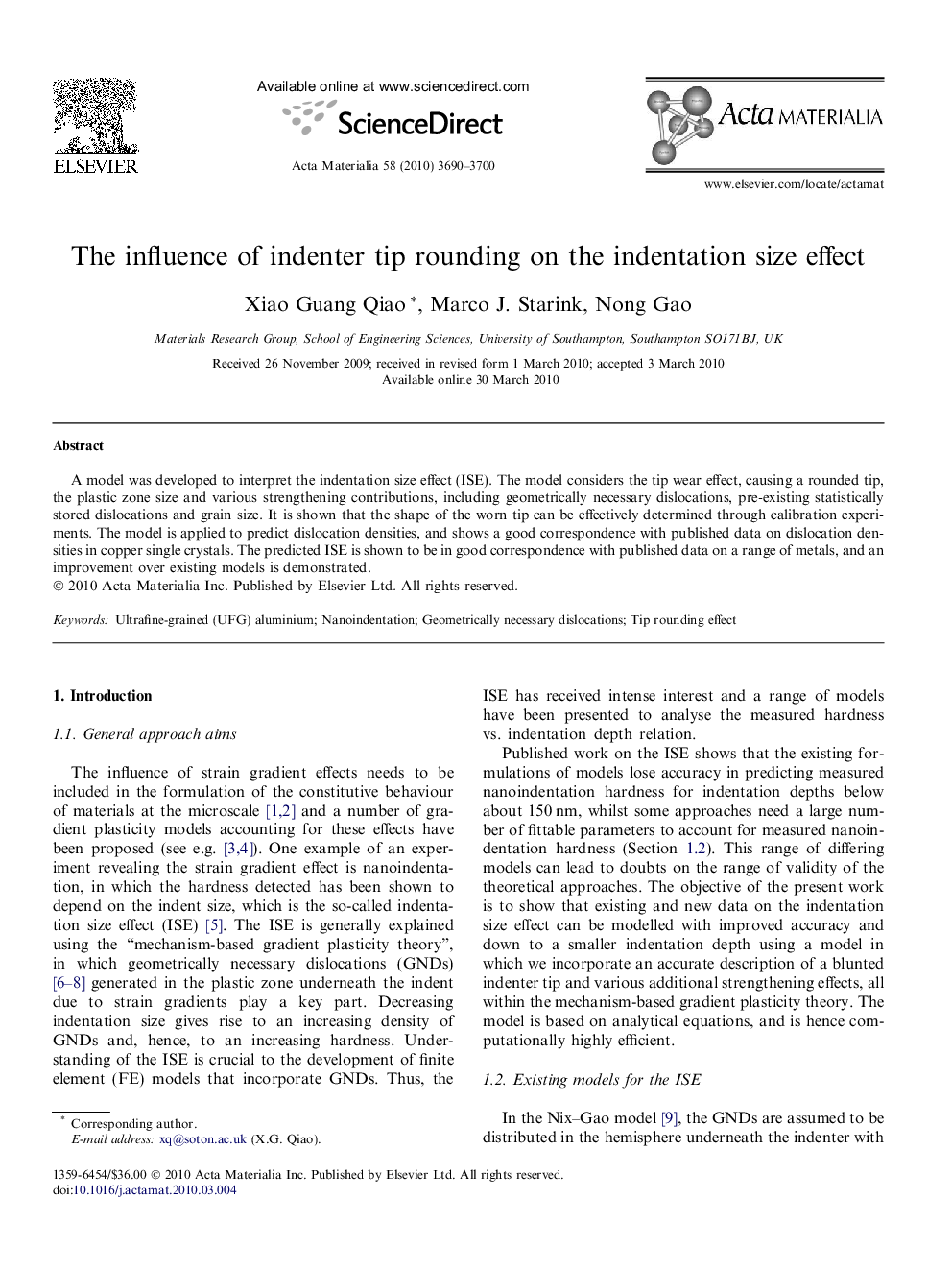| Article ID | Journal | Published Year | Pages | File Type |
|---|---|---|---|---|
| 1448751 | Acta Materialia | 2010 | 11 Pages |
Abstract
A model was developed to interpret the indentation size effect (ISE). The model considers the tip wear effect, causing a rounded tip, the plastic zone size and various strengthening contributions, including geometrically necessary dislocations, pre-existing statistically stored dislocations and grain size. It is shown that the shape of the worn tip can be effectively determined through calibration experiments. The model is applied to predict dislocation densities, and shows a good correspondence with published data on dislocation densities in copper single crystals. The predicted ISE is shown to be in good correspondence with published data on a range of metals, and an improvement over existing models is demonstrated.
Related Topics
Physical Sciences and Engineering
Materials Science
Ceramics and Composites
Authors
Xiao Guang Qiao, Marco J. Starink, Nong Gao,
